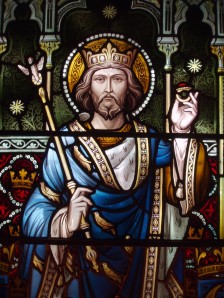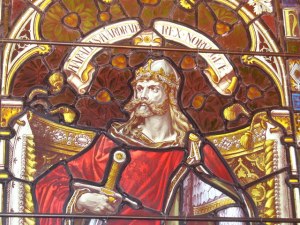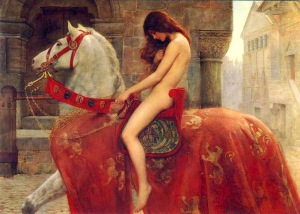Before 1066, there had been an English (Anglo-Saxon) King, Edward, on the throne of England. However, the Anglo-Saxons were not strong: Edward himself had replaced a Danish King as King of England and there were challenges to Edward’s power from inside and outside the Anglo-Saxon world. Edward died childless in January 1066. Edward did not make it very clear who should be the next King. As a result, the Norman-French King, William, saw an opportunity to seize power.

Harold Godwinson, or Harold II, succeeded Edward as King of England on January 5th 1066. It was fairly widely accepted that Edward had chosen Harold as the next King, just before Edward died, although the facts are not very clear. In any case, Harold, the last Ango-Saxon King of England, would be dead in less than one year. William of Normandy in France claimed that Edward had made a promise that he (William, a cousin of Edward’s) would be the next King of England. Therefore, Harold Godwinson was a usurper. William immediately began plans to invade England.

Things got even worse for Harold Godwinson. The King of Norway, Harald Hardrada, also wanted to become King of England. Harold Godwinson’s own brother, Tostig, supported the Norwegian King!

Harold Godwinson, as King of England, had to first defeat Tostig and Harald Hardrada at the Battle of Stamford Bridge on September 25th, 1066.

Harold Godwinson’s army killed Harald Hardrada, Tostig, and most of the invading Norwegian army but Harold soon had to march his soldiers all the way back to the south of England to face the Norman-French invaders. It was just too much for Harold Godwinson, the last Anglo-Saxon King of England.

On October 14th, the armies of the Anglo-Saxon King Harold Godwinson and the French-Norman William met at the Battle of Hastings, the most famous battle in British history. It was a long, battle with many dead on both sides, including Harold Godwinson. Finally, the French proved superior and William the Conqueror was King of England. After the French had crushed a number of rebellions, including resistance led by Hereward the Wake, Anglo-Saxon England became part of the Norman-French Empire.

The Normans made immediate and very drastic changes in England. The Anglo-Saxons were now second class citizens and English was a second class language. Norman French was to be the language of power, prestige, and education. Huge numbers of French words were to enter the English language. French was to remain important in English law for hundreds of years. In fact, for a very long time, the main focus of England’s kings and queens was to be France and not England.

William the Conqueror, William I of England, is perhaps best remembered for the Domesday Book. It was a survey of England. It is written in Latin and gives detailed information about people’s possessions. The Normans wanted a more efficient taxation system. The Anglo-Saxons, second class citizens who spoke a second class language, were to be heavily taxed by their French-speaking rulers. The kings and queens of England were often more focused on extending their possessions in France and elsewhere than they were on helping the poor Anglo-Saxon citizens.

One famous name in the Domesday book is that of Lady Godiva. She is famous for riding a horse through the streets of Coventry as a protest against the high taxes (although this was probably just before 1066). She was sure that the people of the town were too honorable to actually look at her. However, the story goes that one person called Tom did look. He is now immortalized in the name “Peeping Tom,” used to apply to anyone who looks at things (usually) illegally.
